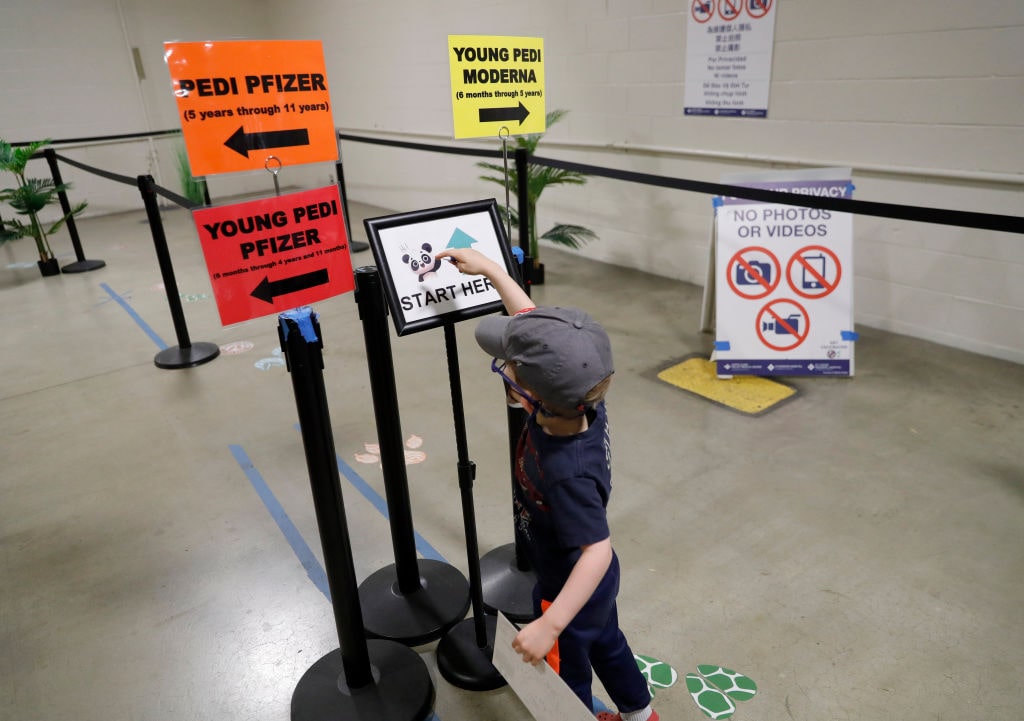A CDC committee has voted unanimously to add the COVID vaccine to the annual childhood immunization schedule. This doesn’t make it mandatory for school attendance, but it’s certainly a step in that direction. While the final decision rests with the states and school districts, the CDC remains adamant that anyone over six months old should be inoculated – and many states will likely cave to the pressure campaign.
COVID Vaccine for Kids
 The CDC’s Advisory Committee on Immunization Practices voted two days in a row – and unanimously both times – to back a COVID vaccine for children. Wednesday, October 19, the group voted to add the shots from Moderna and Pfizer to the federal Vaccines for Children Program. Doing so ensures that once the federal government stops paying for the jabs, those for kids between the ages of six months and 18 years are still covered.
The CDC’s Advisory Committee on Immunization Practices voted two days in a row – and unanimously both times – to back a COVID vaccine for children. Wednesday, October 19, the group voted to add the shots from Moderna and Pfizer to the federal Vaccines for Children Program. Doing so ensures that once the federal government stops paying for the jabs, those for kids between the ages of six months and 18 years are still covered.
The next day, the committee voted to update the annual childhood and adult vaccination schedules. The next step is for the addition to be published in the Federal Register and to be adopted by the CDC, APA, and others as the standard of practice.
What does this mean, moving forward? Both private insurers and the federal government use this schedule to determine what vaccines they will cover. Additionally, many pediatricians follow the CDC’s recommendations with little if any deviation. Often what this means is that doctors will order whatever vaccines are on the list as a matter of course. Once an immunization joins the schedule, it becomes just another of the default shots that millions of parents across the nation take their kids in for – often with little if any idea what is being given to their children – simply because it’s “the norm.”
Parents are allowed to ask about the vaccines – as well they should – and refuse any they don’t wish their kids to have, though choosing not to have certain shots generally requires some alternative to public school. However, they must take the initiative themselves to do so, as the CDC’s schedule makes recommended immunizations an “opt-out” rather than “opt-in” thing.

(Jane Tyska/Digital First Media/The Mercury News via Getty Images)
The Ever-Growing List
Anyone with young kids today might be shocked to see how many jabs are recommended for little ones compared to their own immunization history. The schedule is – like most government creations – ever-growing. The 2022 edition, for example, included a whopping 23 to 25 doses – which includes a few combination vaccines, by the way – in the first 15 months of life. From 18 months to 18 years, it called for another 13, not counting annual flu shots. All that is to protect against 17 ailments.
Most millennials were inoculated against half as many, and with fewer total doses. It was DTaP (diphtheria, tetanus, and pertussis), the MMR (measles, mumps, rubella), OPV (polio), and Hib from 1985 – 1994. Hepatitis B was added in ’95, and by 2000, the list of things to vaccinate against had grown to 11. Yet somehow the children of the ‘80s and ‘90s have managed to survive 30-40 years on half the shots their own kids get today. One shudders to think of the razor’s edge walked by Gen Xers and Baby Boomers all this time!
Shots for Schoolkids
The CDC is careful to point out that it does not determine what immunizations are required to attend public school. That’s determined either by state law or, in absence of relevant legislation, each individual school board. However, much like insurance companies, these rule makers look to the CDC’s schedule first.
According to the National Academy for State Health Policy, the District of Columbia already requires the COVID vaccine before students can attend school, though uninoculated kids won’t be sent away until January 2023. California also has a mandate, but it hasn’t been implemented and won’t be until July 2023. Another 21 states have already passed laws prohibiting such a requirement. That leaves, however, 28 states with no regulation. Some will likely take up the issue now that the CDC has weighed in, but in some unregulated areas, school boards are taking matters into their own hands.
So no, the federal government – and an unelected executive agency, to boot – isn’t forcing parents to give their kids the new jabs, but that’s likely only because it can’t. The Biden administration has proven its determination to push the COVID mandates to the full extent of its power – and beyond, if allowed. Updating the CDC’s immunization schedule isn’t a mandate because it can’t be, but it’s certainly a step in that general direction.

